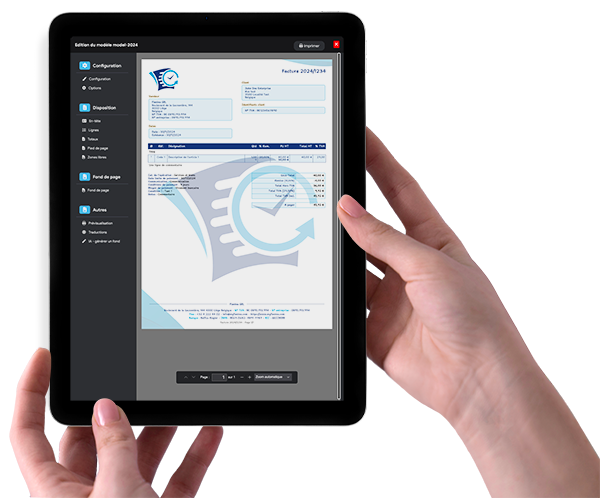To respond to inflation and increase purchasing power, the Luxembourg government has decided to reduce VAT rates by 1% from January 1, 2023 until December 31, 2023.
Please note: this article is from 2023, here is the new article for 2024: VAT rate changes 2024 in Luxembourg
This temporary measure modifies the VAT rates:
- The 17% VAT rate becomes 16%.
- The 14% VAT rate becomes 13%.
- The 8% VAT rate becomes 7%.
- The 3% VAT rate remains unchanged.
This measure is temporary, so the rates will return to the rates applicable in 2022 from January 1, 2024.
For more information: https://www.cc.lu/toute-linformation/actualites/detail/baisse-du-taux-de-tva-a-partir-du-1er-janvier-2023.
What should I do to ensure my invoicing software takes this VAT rate change into account?
With Flexina Invoicing, you don't have to do anything, the new VAT rates have been added and the default rates applied to your customers and items have been updated.
New 2023 invoices will automatically take this VAT rate change into account.
However, you must pay attention to converting 2022 quotes to invoices, for deposit invoices and balance invoices to apply the correct VAT rate according to the chargeability, we explain this point below.
Should I apply the reduced rate to all invoices issued from January 1, 2022?
No, you must pay close attention to VAT chargeability which is decoupled from the taxable event: just because you issue an invoice in 2023 doesn't mean the new reduced VAT rates are applicable.
We advise you to read the circular: https://pfi.public.lu/content/dam/pfi/pdf/circulaires/tv/2022/20221201-circulaire-812.pdf and to contact your accountant and/or your trust company to verify this point.
There are examples to explain VAT chargeability in the circular:
Example 1: work subject to normal VAT rate, completed in November 2022
If the invoice is issued:
- on December 9, 2022 => Rate 17% the tax becomes due on December 10, 2022.
- on December 19, 2022 => Rate 17% the tax becomes due on December 15, 2022.
- on January 4, 2023 => Rate 17% the tax becomes due on December 15, 2022.
Example 2: work subject to normal VAT rate, completed in December 2022
If the invoice is issued:
- on December 20, 2022 => Rate 17% the tax becomes due on December 20, 2022.
- on January 20, 2023 => Rate 16% the tax becomes due on January 15, 2023.
- on February 2, 2023 => Rate 16% the tax becomes due on January 15, 2023.
Be careful about VAT chargeability for deposit invoices and balance invoices.
Example 3: work subject to normal VAT rate, started in 2022 and completed in February 2023
Invoices issued:
- on October 18, 2022 for a deposit not yet received => Rate 17% because the tax becomes due on October 18, 2022.
- on December 2, 2022 for deposit received on November 24 => Rate 17% because the tax becomes due on November 24, 2022.
- on January 6, 2023 for deposit received on December 29 => Rate 17% because the tax becomes due on December 29, 2022.
- on January 6, 2023 for a deposit not yet received => Rate 16% because the tax becomes due on January 6, 2023.
- on March 27, 2023 for the balance => rate 16% The tax becomes due on March 15, 2023.
As you can see from the examples provided in the circular, it's not that simple, you absolutely must check the rate to apply when issuing deposit invoices, balance invoices or converting your 2022 quotes.
Our team is at your disposal if you have any questions about this temporary measure.




